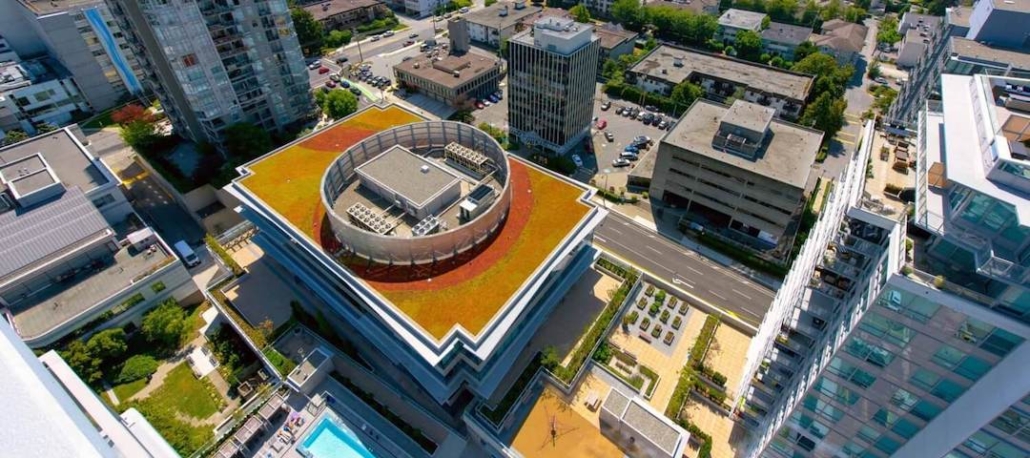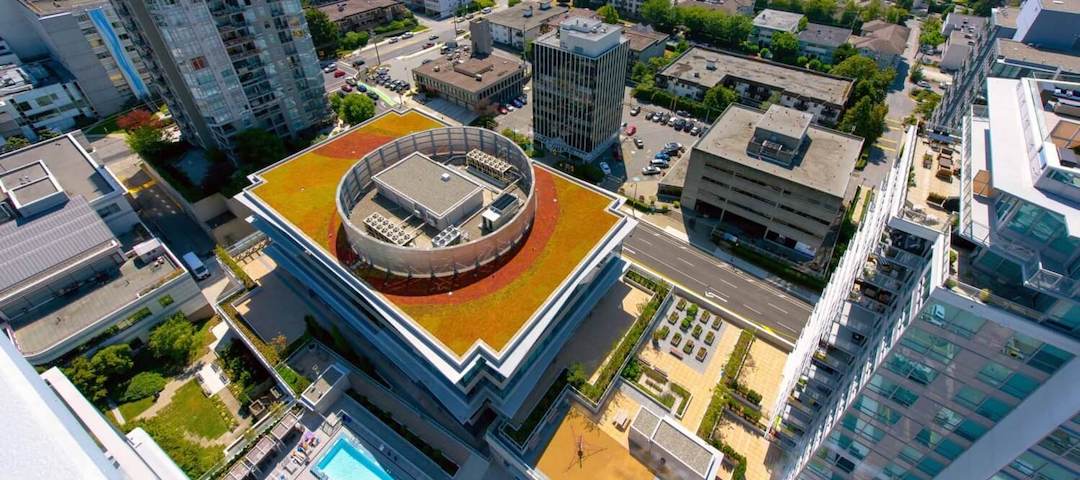Heat domes, wildfires, droughts—Canadians have firsthand experience of the effects of climate change on our weather. And from British Columbia to the Atlantic provinces, this also includes heavier and more frequent rains, which are flooding communities across the country. A sponge approach can help build more climate-resilient cities.
In the past, lawns, gardens, parks and meadows did some of the heavy lifting after a downpour, absorbing water into the ground. But as concrete jungles expand, excess water has nowhere to go. “All the rain gets deflected into the storm sewer system, which can only take so much water,” says Ron Schwenger, president of Architek.
With more forceful rainstorms happening more often, these systems become overwhelmed, putting a high imperative on creative new solutions to reduce the deluge. For Schwenger, stemming this rising tide means making building surfaces more absorptive. “The spongier a city is, the more capable it is of managing water during a heavy rain event,” he says.
Read how Architek is innovating with Blue Green Roofs on CanadianBusiness.com






